After spending the morning exploring the Austrian pene-exclave of Hinterriß-Eng, I headed back to Bavaria to continue my roadtrip through Germany. I had a few hours of driving to do, but I took it slowly and took in the views as I drove past gorgeous mountainous villages such as Wallgau (note to self – do come back here!).
I made a quick stop in the beautiful city of Garmisch-Partenkirchen to enjoy a vegan subway while looking at the colourful buildings of the city centre. Then I continued north and made a quick stop at the majestic Ettal Abbey, which is the largest Benedictine monastery in Germany, before arriving at my final stop for the day, the beautiful Wieskirche.
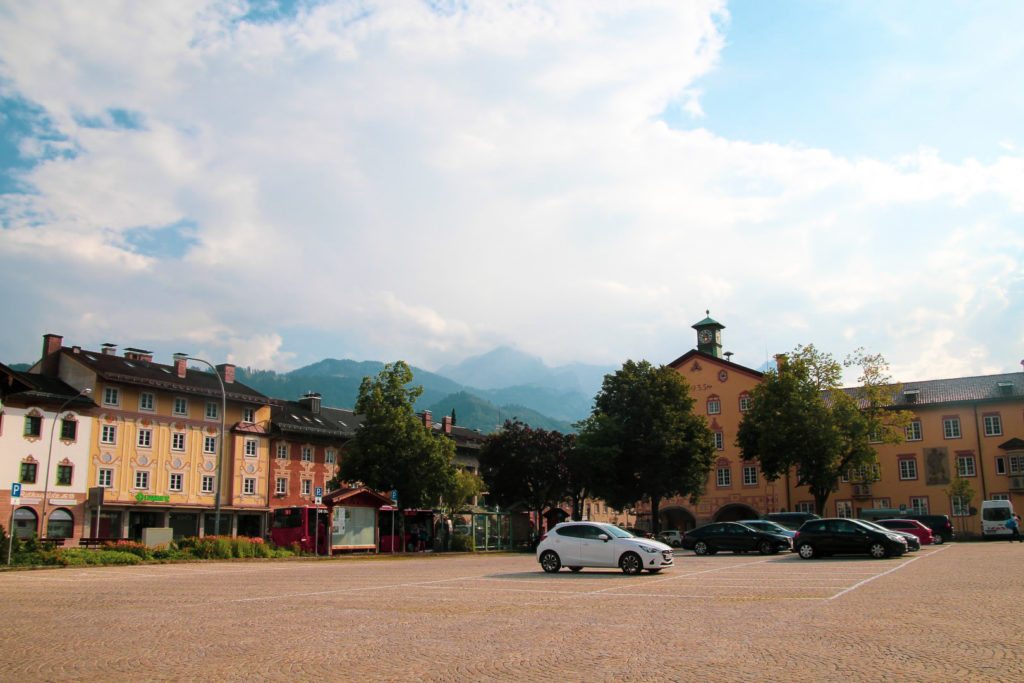

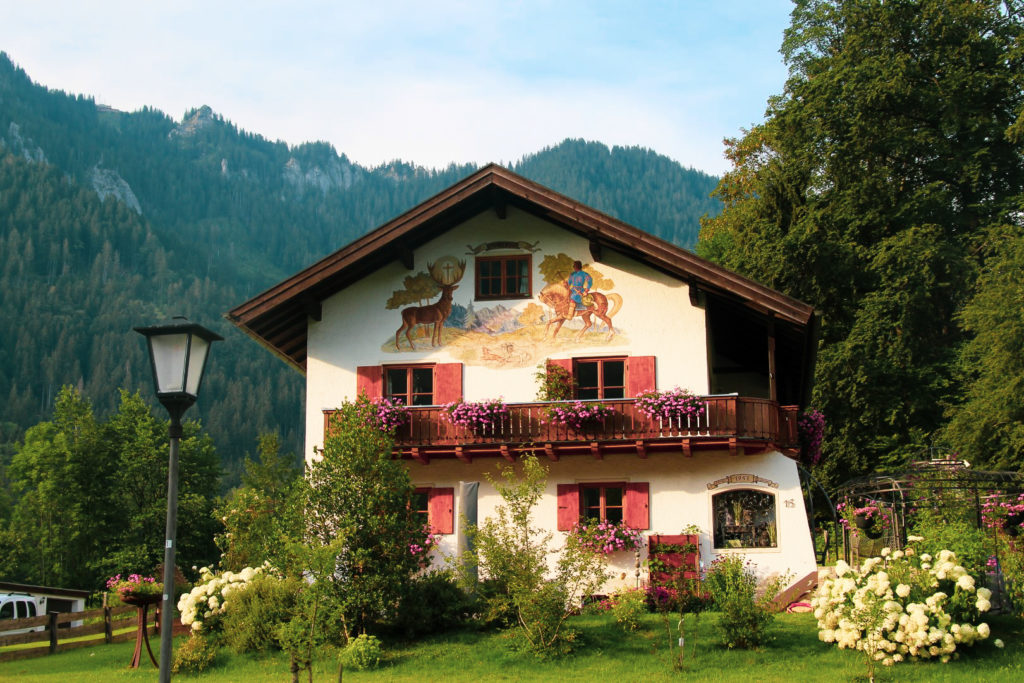
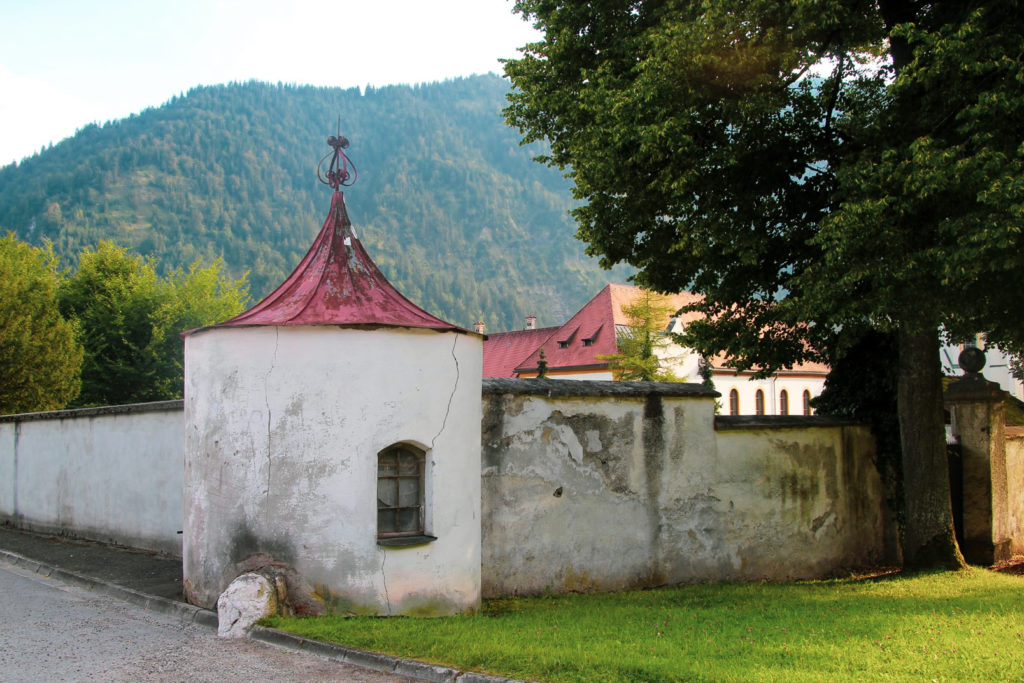

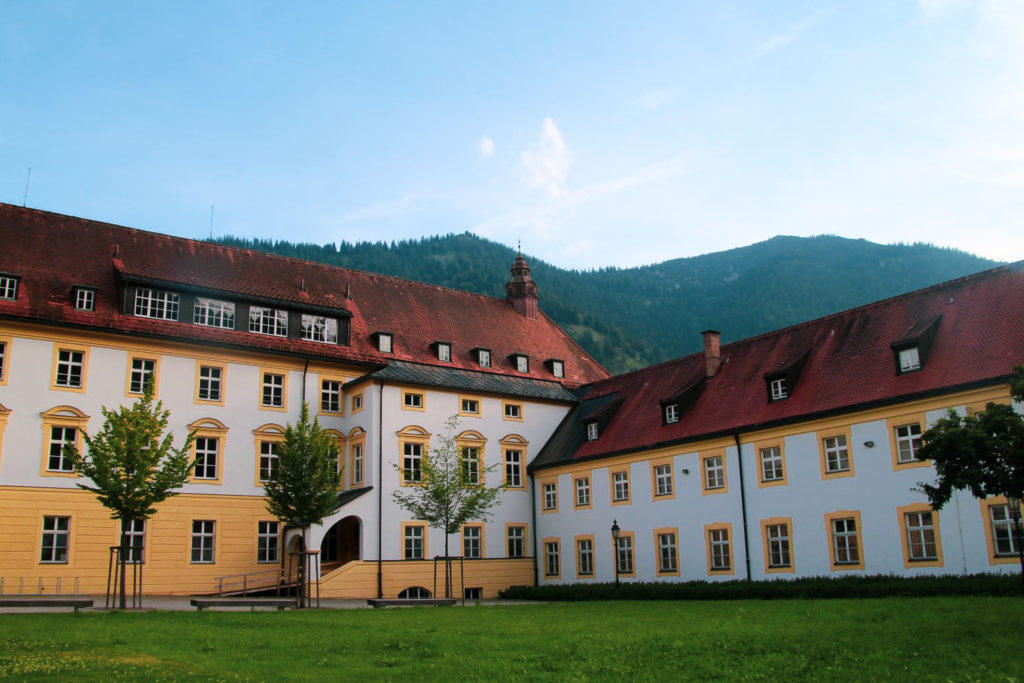
The unfathomable beauty of Wieskirche
Wieskirche – or the Pilgrimage Church of Wies – was the first of many UNESCO World Heritage Sites that I visited on my roadtrip – and my favourite, actually.
The oval rococo church was built between 1745 and 1754, designed by the brothers Johann B. and Dominikus Zimmermann. According to local legend, tears were seen on a dilapidated wooden sculpture of the Scourged Saviour in 1738, which resulted in a pilgrimage rush to the area in the following years. Many worshippers claimed that they had been miraculously cured of their illnesses after praying in front of the sculpture, attracting even more pilgrims. A small chapel was built to house the sculpture, but it soon became too small for all the pilgrims, so it was decided to construct the glorious Wieskirche.
Its pale yellow exterior against the green foothills of the Alps is a beautiful sight in itself, but it is the interior that makes the church truly shine – and all other churches pale in comparison. As soon as I stepped inside the church, I was in awe. Every inch of the walls are elaborately decorated in late Baroque style, with colourful frescos and golden details. It’s quite possibly the most beautiful church I’ve ever seen.
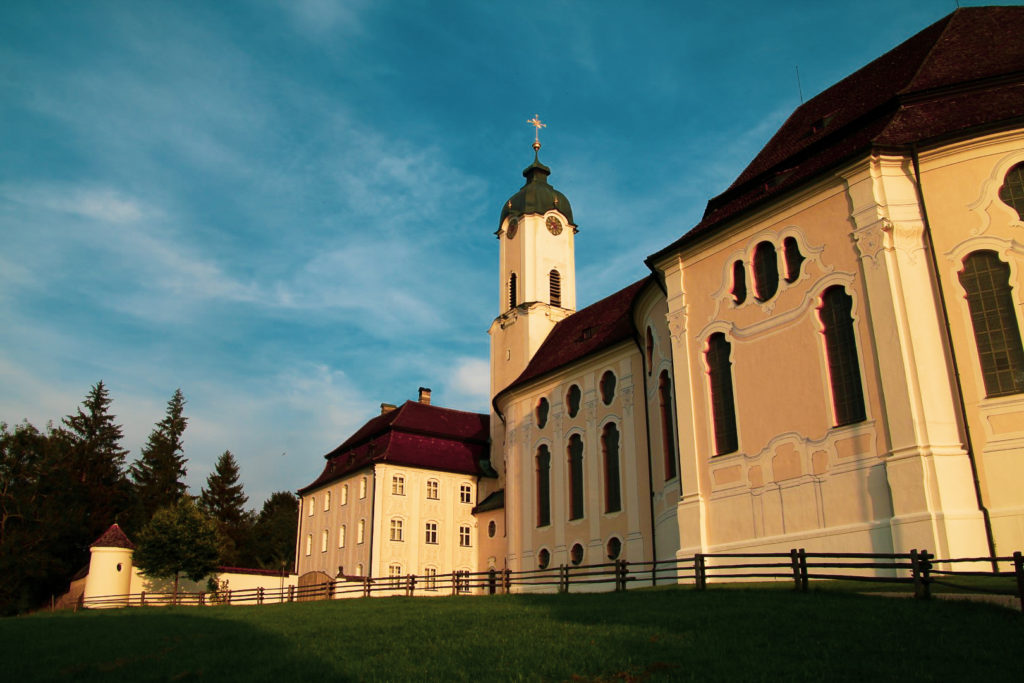

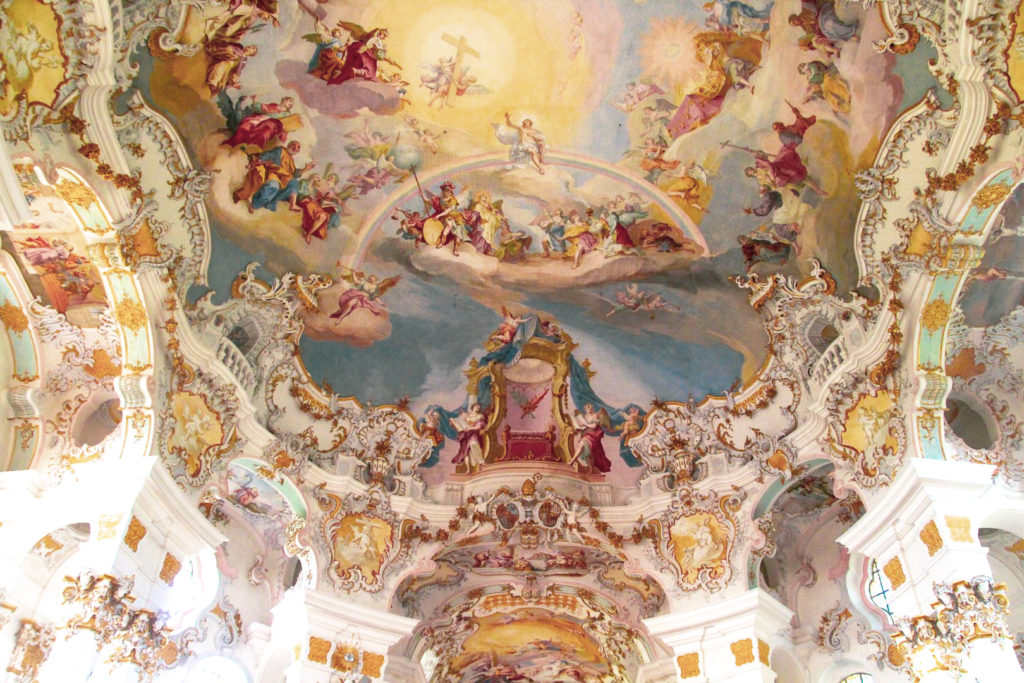
Slow morning by Lake Lechstausee
Eventually, I had to pull myself away from the church as it was about to close for the night. I still had yet to find a campsite for the night and it would soon be dark. I drove around for a while and finally settled at a large campsite by the beautiful lake, Lechstausee.
I woke up around 8 AM in my car the next morning. The night hadn’t been quite as good as the first night – maybe I should’ve chosen to put up my tent instead of being lazy! But a refreshing shower woke me up and afterwards, I found a nice quiet spot by the lake to eat my breakfast in the sun. I love slow mornings!
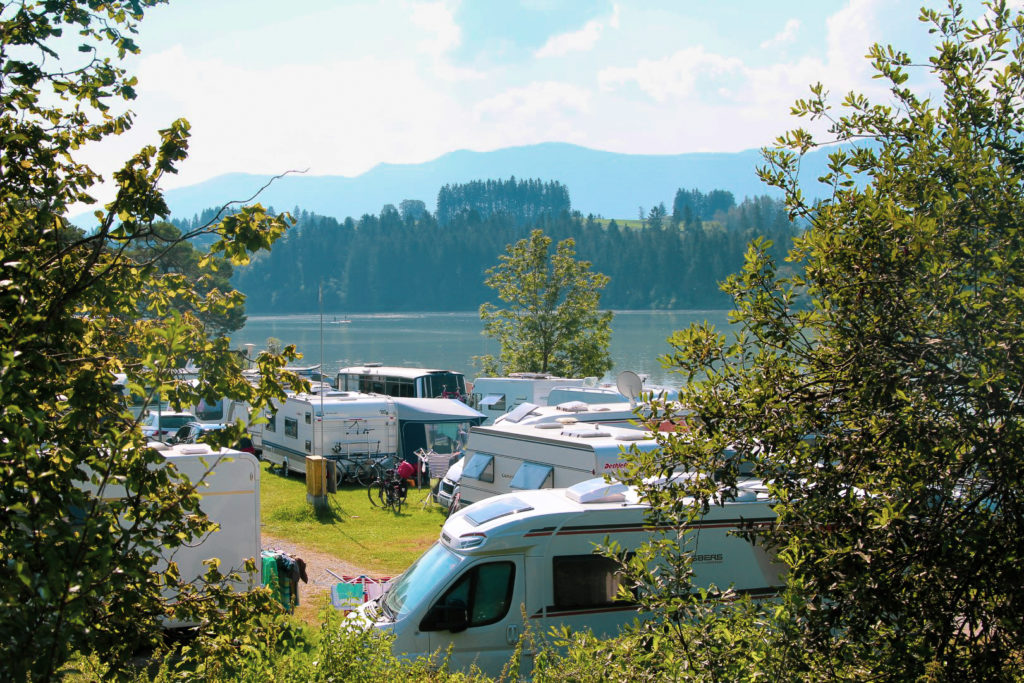
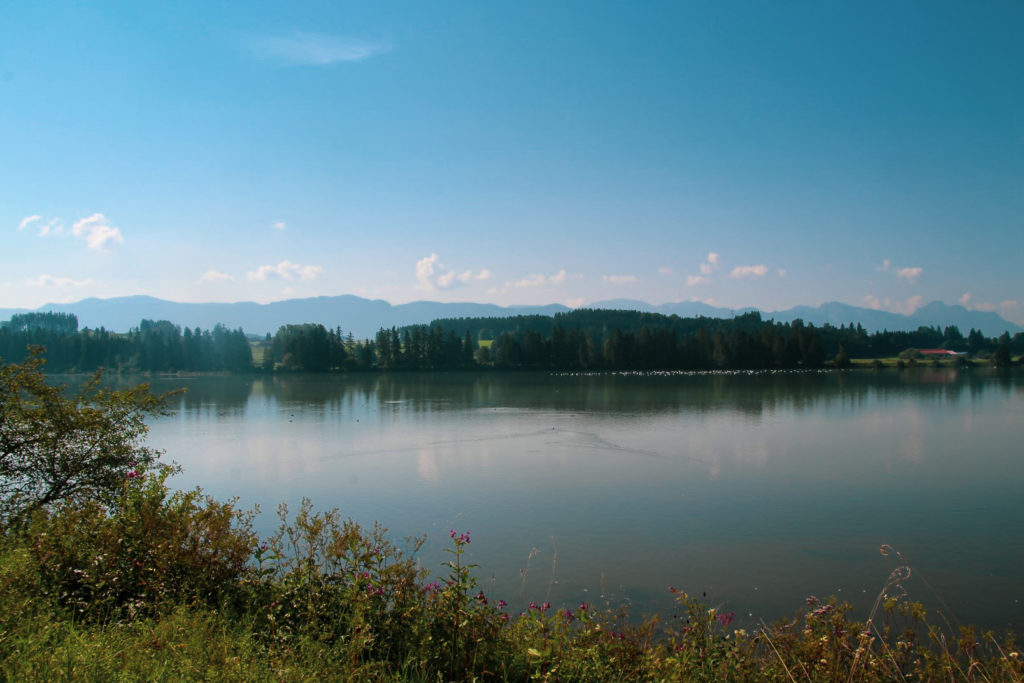
Seeking out the perfect view of Neuschwanstein Castle
The first place I went to that day is a place that is included on most roadtrip itineraries for South Germany. I’m talking about the famous 19th-century historicist castle, Neuschwanstein, which was used as a retreat by King Ludwig II of Bavaria. If you have Instagram, you’ve seen it!
The castle is located on a hill above the village of Hohenschwangau with a gorgeous backdrop of the Alps. It’s no wonder that this spot is one of Germany’s most popular viewpoints. In fact, around 6,000 people visit the castle every day during the summer! And yes, even during corona times.
I drove to Hohenschwangau, the starting point for the trails that lead to the popular viewpoint of the castle. I had to pay eight euros for parking, which is a ridiculous price, but at least the sight itself would be free since I wasn’t planning to enter the castle itself. My plan was to see it in all its glory from above.
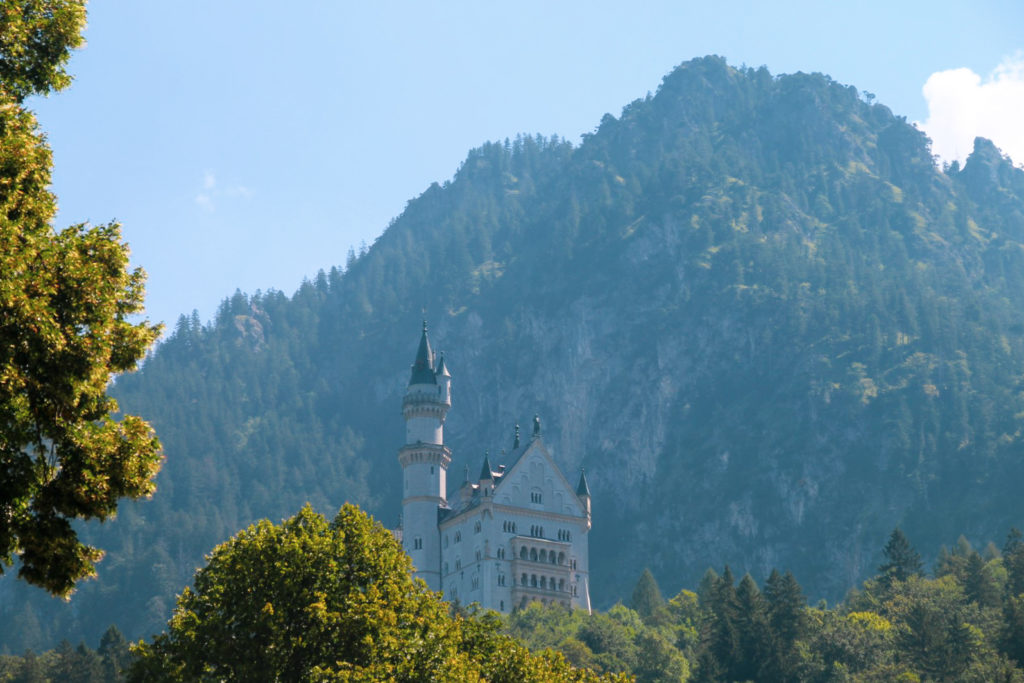
The most popular place to view the castle is from Marienbrücke, so that was where I decided to go first. The trail is only just over 1 km, although it’s really steep, but after months of walking 15,000+ steps per day, I was in good shape and didn’t find it too tough. But when I got there, I realized that there was no way I was going to see the view I’d come for. The place was absolutely packed with people and the queue to the bridge was three hours long (I think it was due to restrictions on how many could be there at once because of Covid).
There was no way I was going to stand there for three hours in the heat, so I decided to seek out some alternative viewpoints. I followed a group of people with the same intentions as me, and ended up with a view of the castle with the bridge in front of it. Not ideal, but still a fun view to see.
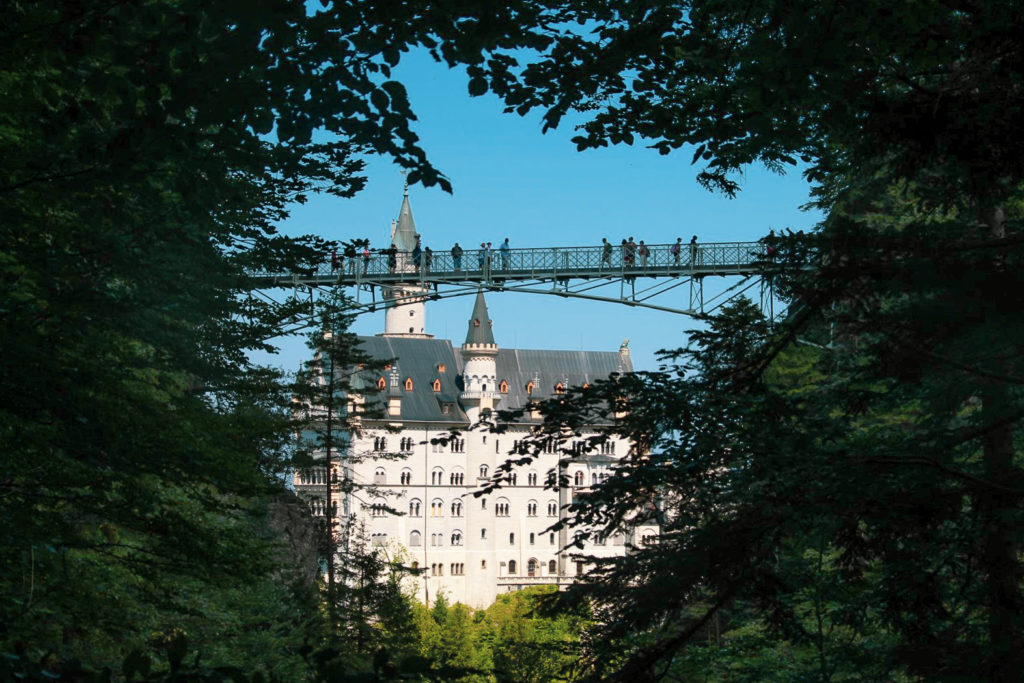
I went back to the queue and spotted another trail to the right, which I decided to follow. It took me up another 146 meters to a different – more distant – viewpoint.
This 1 km trail was even steeper than the first and there were only a few others trying to do the same as me, all searching for a view of the castle that didn’t involve standing in a queue for hours on end. I turned a corner and went up yet another steep hill and then I spotted a young couple in the forest taking pictures. They’d found the viewpoint!
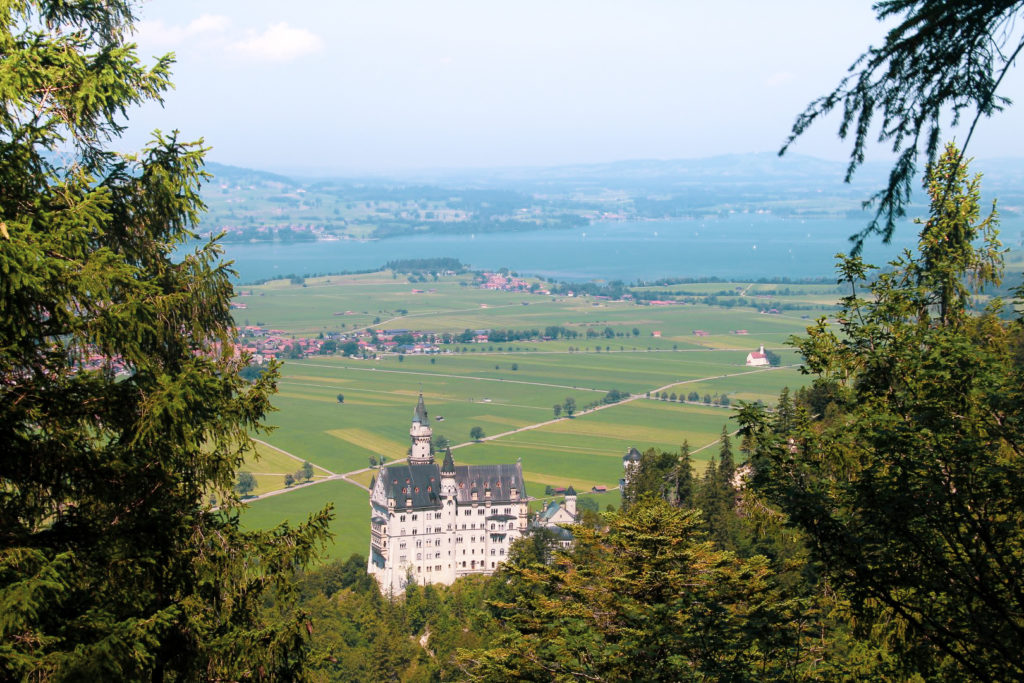
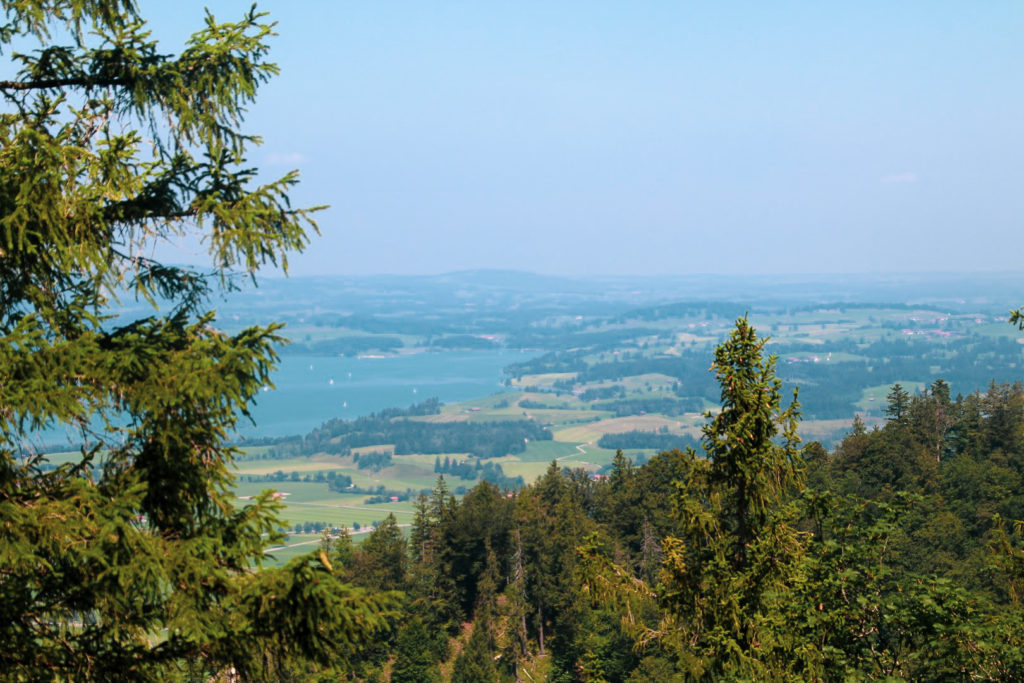
The view was absolutely beautiful. The castle was quite far away, way below me, but I could see it all as well as the surrounding countryside. I stood there for a while, pondering whether or not it was still worth trying for a different, closer view.
I decided to try.
So I hiked back down to the queue and followed a path to the left of the path to Marienbrücke. There was another viewpoint just a few hundred meters in, which many others had chosen instead of Marienbrücke. The view was lovely and included the nearby 19th-century Hohenschwangau Castle. But the view of Neuschwanstein, the star of the area, wasn’t the greatest. I wanted more.
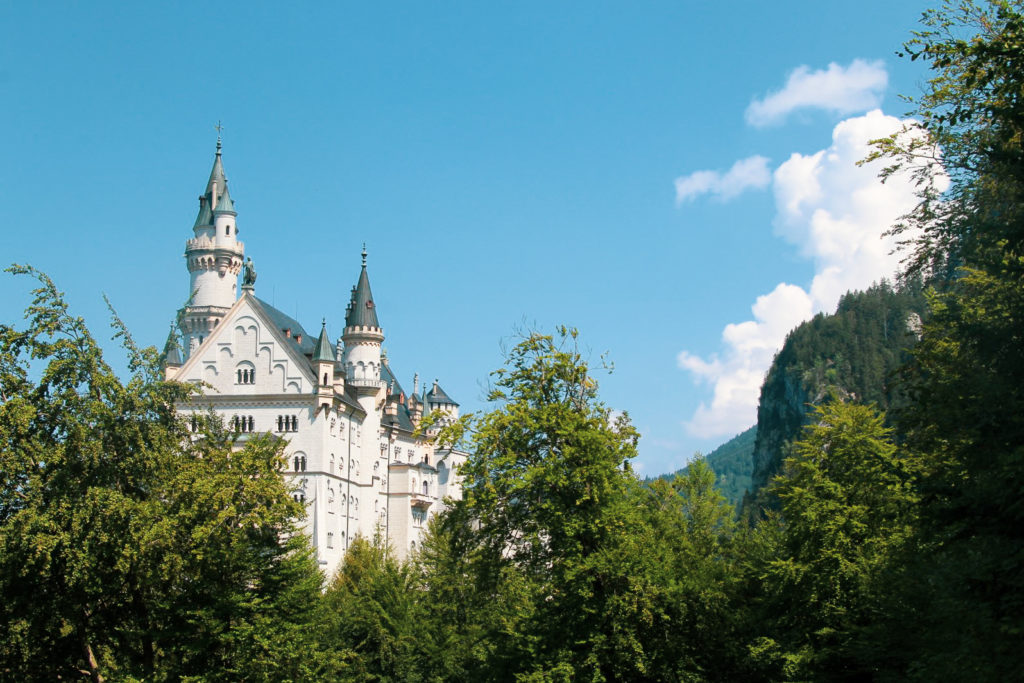
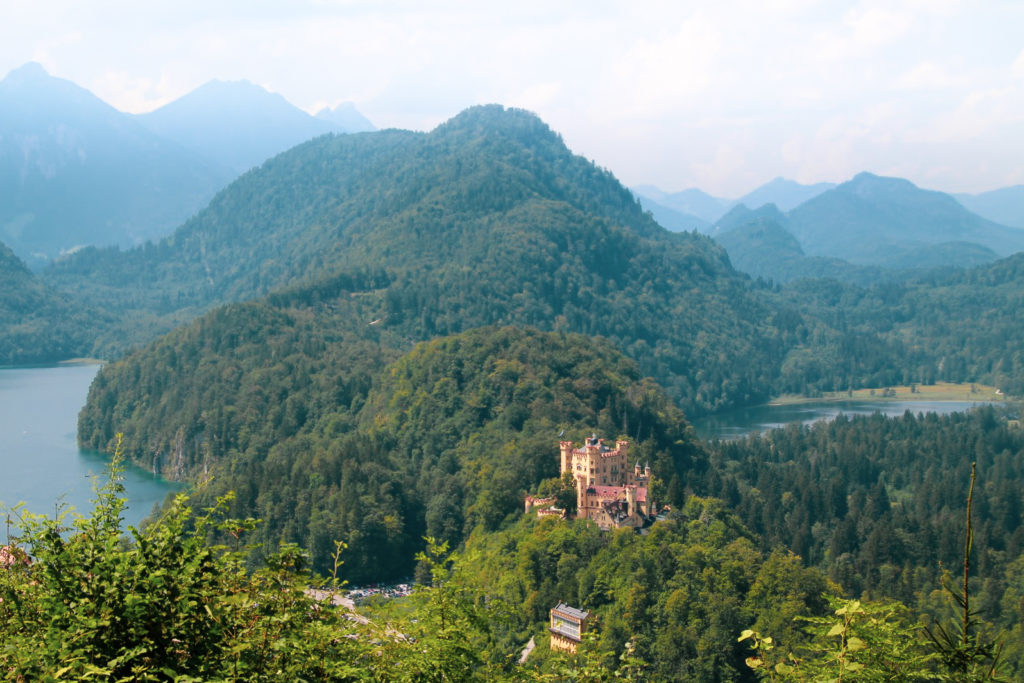
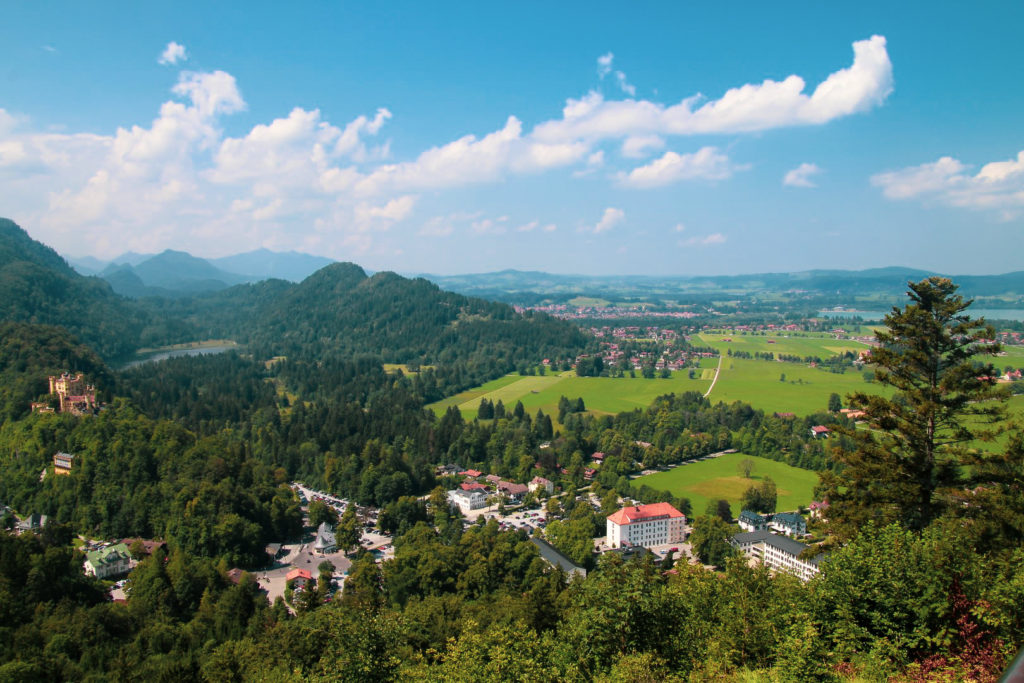
I hunted for a better viewpoint and tried to get as close to Marienbrücke as I could, hoping for a gap in the trees. A fence blocked my way, but I found a section where it was broken so I could walk through. The view still wasn’t quite good enough, but then I spotted a small footpath that was quite overgrown. It lead me towards Marienbrücke, and I felt like this could be my lucky day. Then I spotted a family standing at the very edge of the forest, on top of a cliff, and I went to them. There it was, almost the exact same view of the castle as from Marienbrücke but without a queue! I couldn’t believe it, but I was absolutely thrilled! I finally found the view I’d come up there for.
I chatted to the German family for a while, and we agreed not to tell people, both to keep the place a bit secret but also because it isn’t as safe as the bridge. The viewpoint is at the edge of a cliff so if the masses went there, who knows what could happen.
But for you, my dear reader, here’s an explanation on how to skip the queue and get almost the exact same view as from Marienbrücke:
When you get to the small hut just before the turn-off for the bridge, take the trail to the left of the trail to the bridge. About 150 meters in, you should see a hole in the fence that you can go through by climbing up a small hill into the forest. When you get up there, look to your right and you’ll see a small overgrown footpath. Follow it until you see a gap in the trees and a steep rise. That’s the cliff that you want to be on. Be careful and stay away from the edge, and enjoy the view! If you walk a bit further along the path, you’ll be directly above the bridge and can look down on the horde of people that aren’t yet in on the secret.

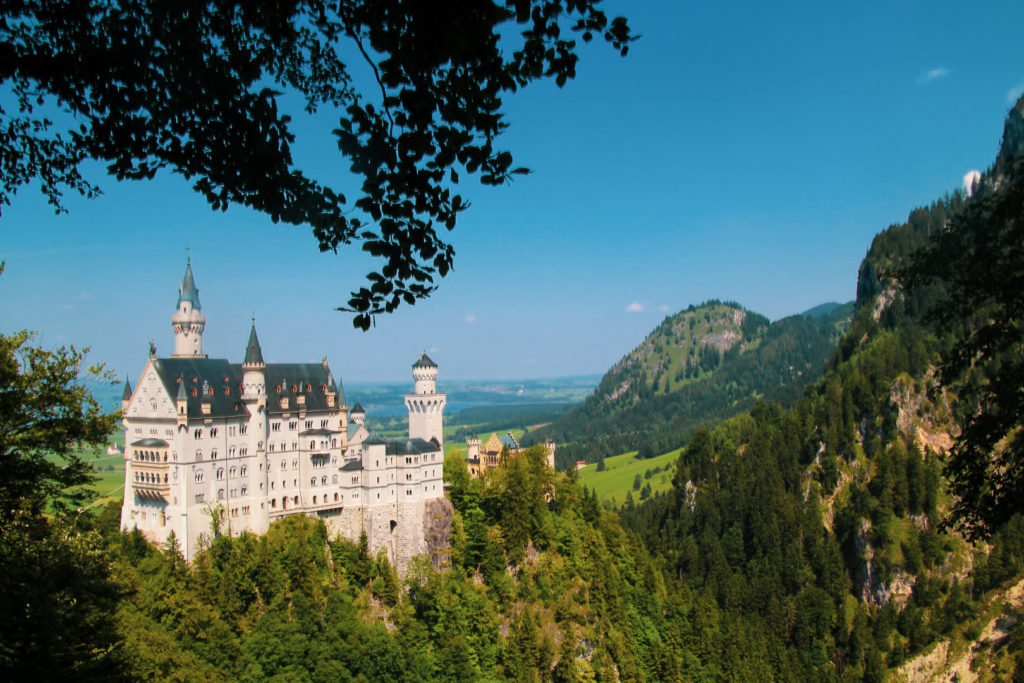
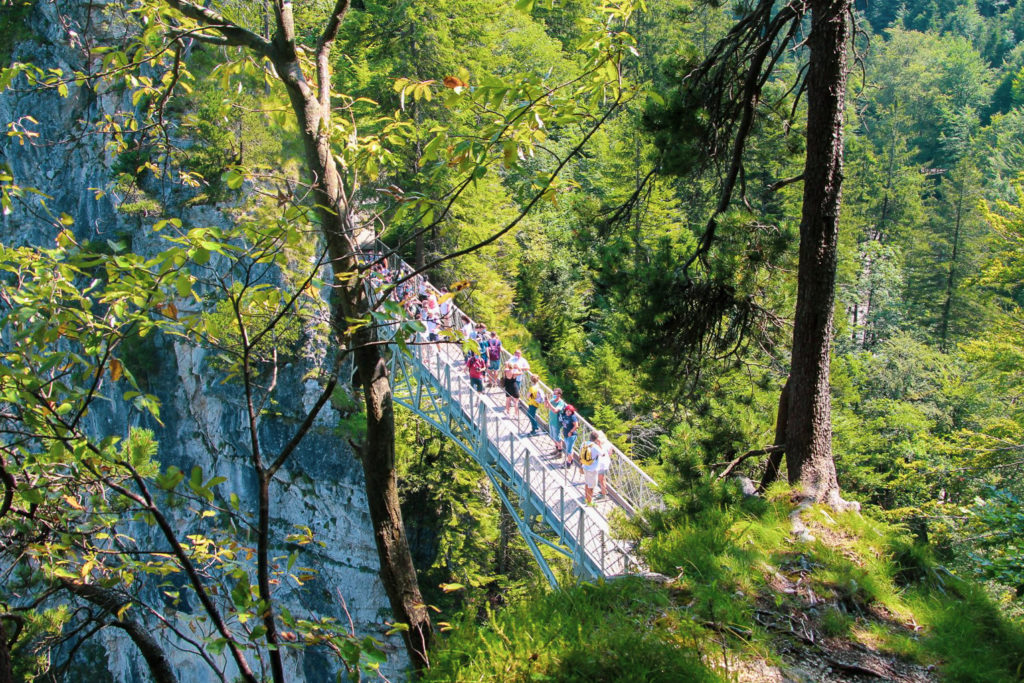
A step into Austria from Lake Alatsee
Satisfied with my castle view hunt, I headed further into the Bavarian Alps to the small turquoise lake, Alatsee, located at an elevation of 868 meters. Despite its obvious beauty, it has a dark history as many divers have disappeared mysteriously due to the toxicity of the organisms that live in the lake. At a depth of 15 meters, there is a poisonous layer of sulfur-eating purple bacteria where life is no longer possible, a unique phenomenon that, according to scientists, is caused by gypsum from the rock walls that washes into the lake when it rains.
Despite these horror stories, there were many people swimming in the lake, but I definitely wasn’t going to join them. I did, however, enjoy a leisurely 1,6 km walk around the lake. I stopped halfway to eat my lunch on a bench while trying to spot frogs on the many water lilies that dot the surface of the lake.
Moments later, I spotted a trail leading over the border to Austria. Alatsee is only a few meters from the border, so it didn’t take me long to walk there, in fact I think it was less than a minute away from the trail around the lake. I walked a bit further into a forest until I saw a beautiful view of the Austrian town of Vils below me. As easy as anything and without anyone noticing or caring, I’d crossed an international border. In my opinion, that’s how border crossings should be all over the world – for everyone. This little detour was my third time crossing into Austria in two days, but it wouldn’t be my last.
After I returned to Germany, I continued following the trail around the lake and soon came to a grassy spot that was full of people sunbathing and swimming. A few moments later, I was heading towards the car, leaving the pretty turquoise lake with the dark history behind.
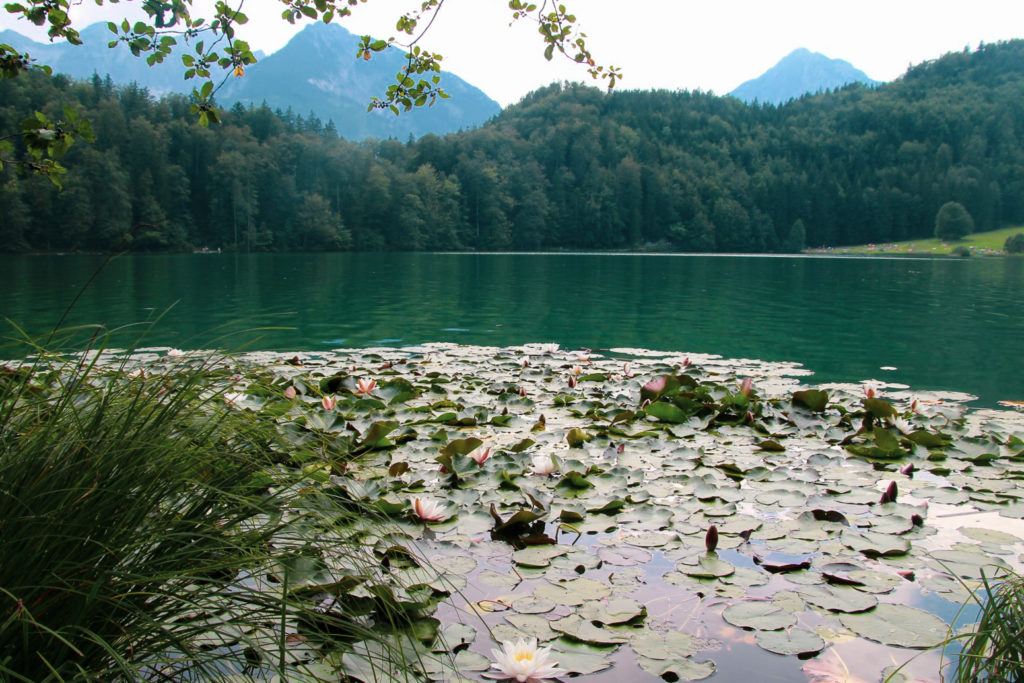
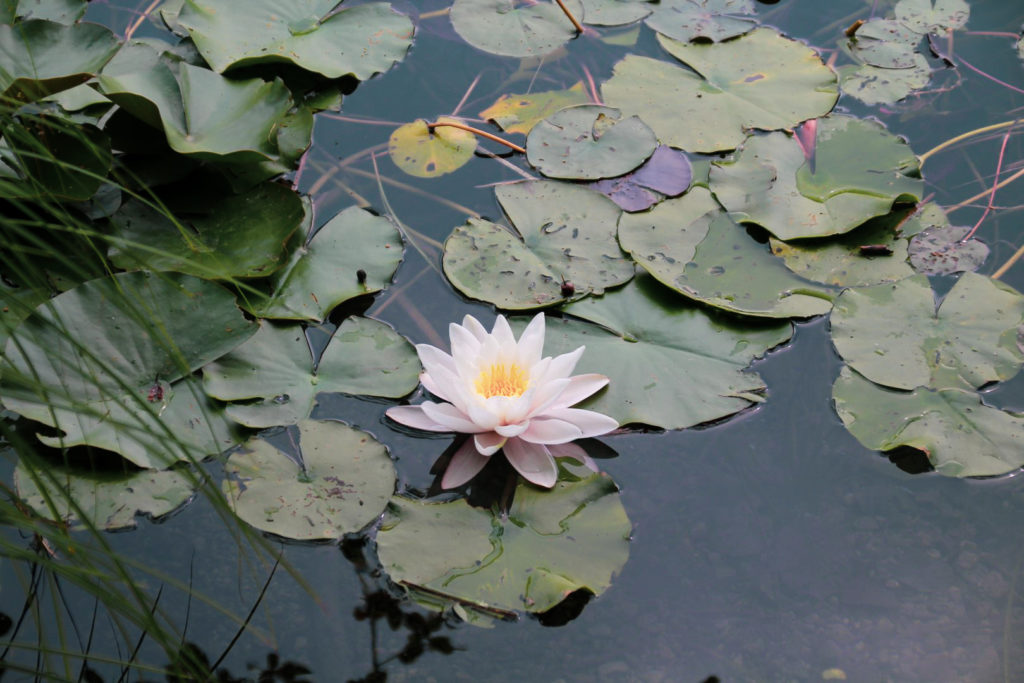
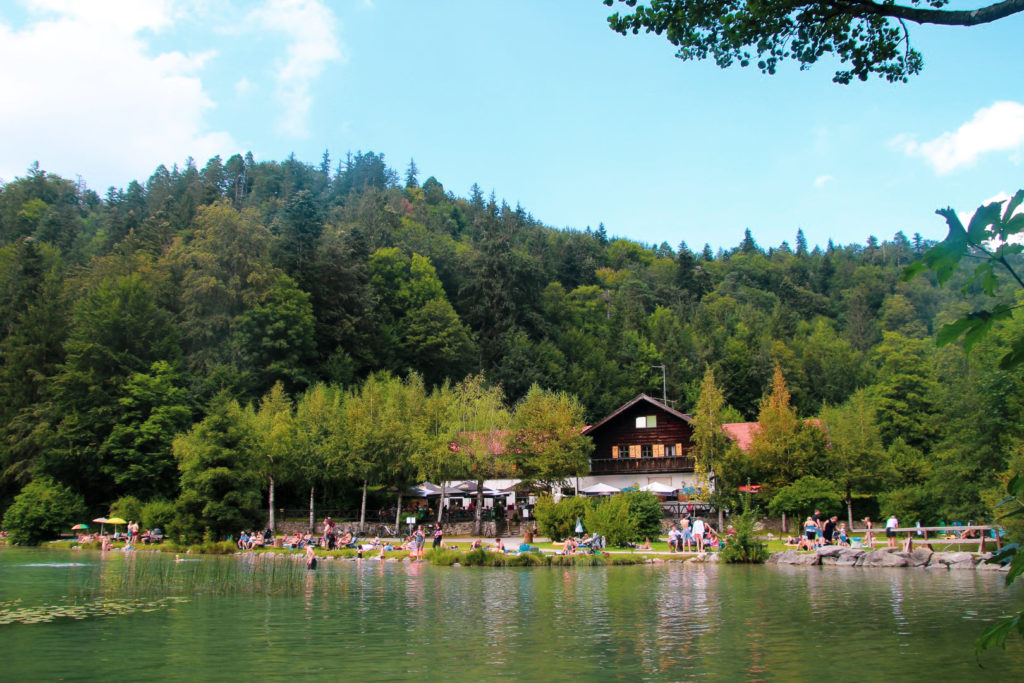

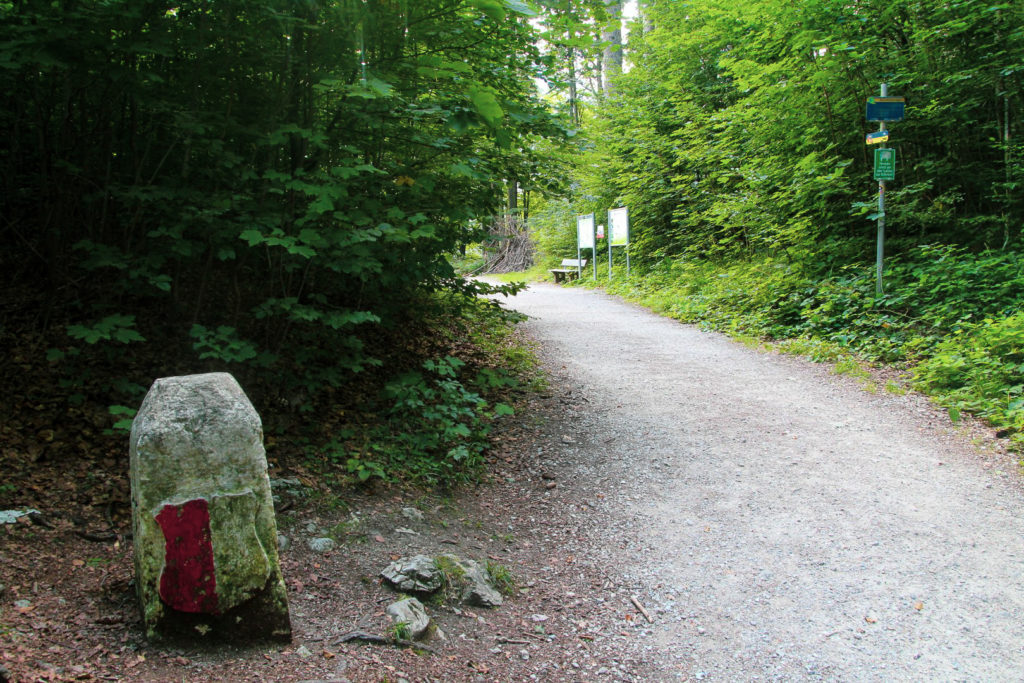
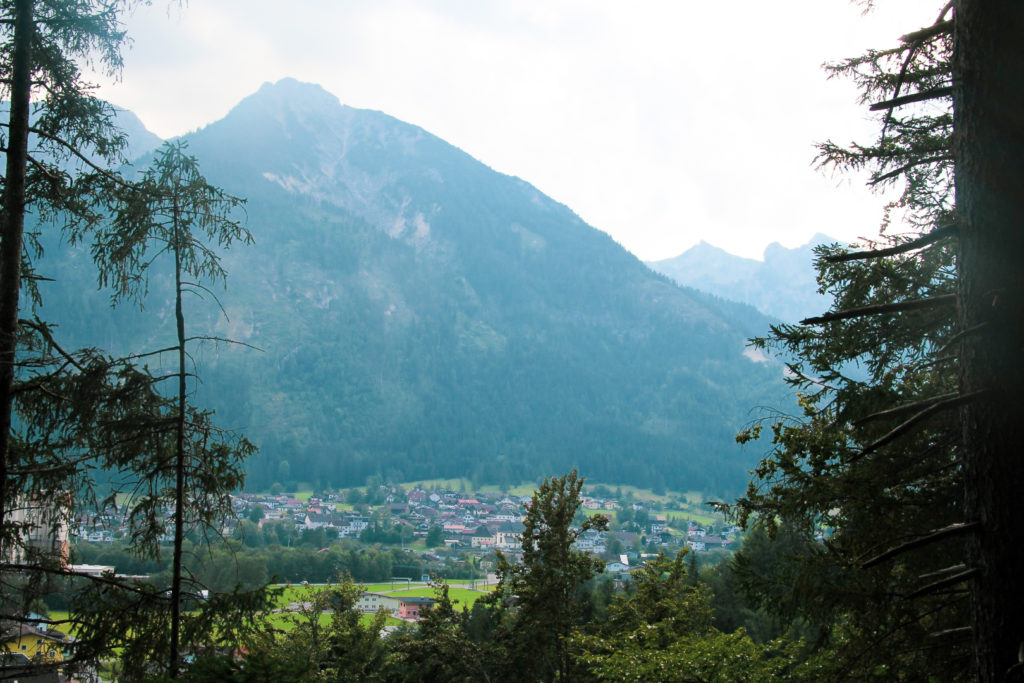

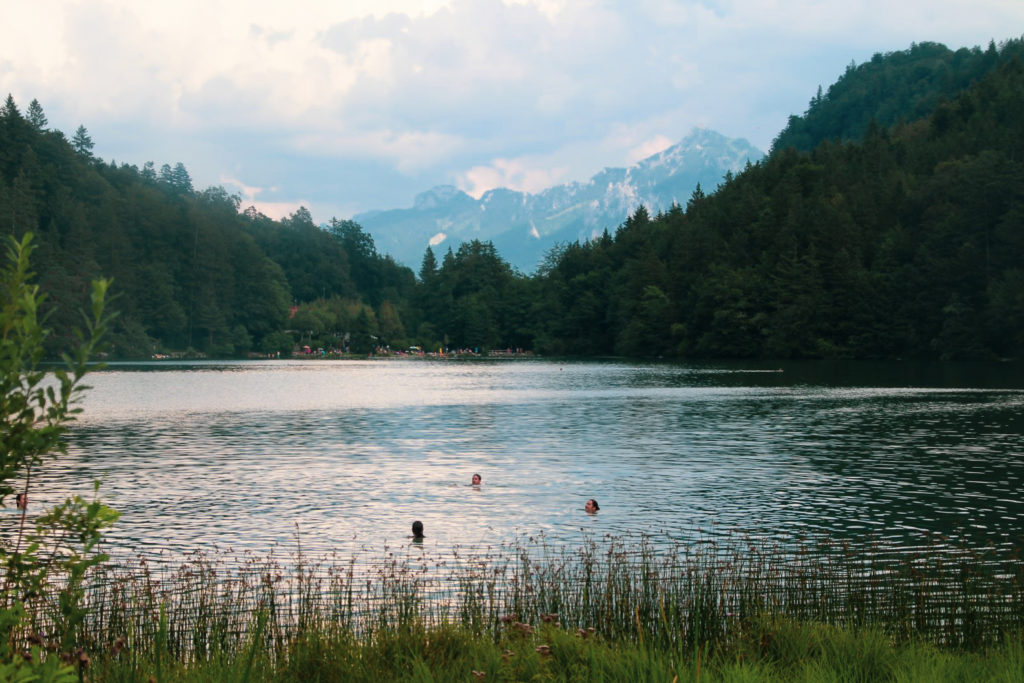
Hilltop fortresses and the most idyllic view ever
I wasn’t quite done with hiking that day. I drove far up into the mountains in the search of two hilltop fortress ruins, Burgruine Eisenberg from the early 14th century and Burgruine Hohenfreyberg from the early 15th century. A reader had recommended these fortresses to me (thank you, Max!) – and wow, I’m so thrilled he did!
Because not only were the ruins incredibly exciting to explore, they also offered the most beautiful view I saw in all of Bavaria.
The oldest of the two fortresses, Eisenburg, was built as the centre of a new lordship for the nobles of Hohenegg that had been deprived by force from their former castle by the Tyroleans. Eisenberg was placed on top of a hill with a high wall surrounding it, in order to visualize their power towards the enemy. However, the conflict soon ended and by the end of the 14th century, the nobles of Hohenegg sold the fortress to Austria. Frederic of Freyberg became constable of the fortress, and a few centuries later, his eldest son built the neighbouring fortress of Hohenfreyberg.
Unfortunately, towards the end of the Thirty Years’ War from 1618 to 1648, the Austrians decided to burn the castles to avoid them being conquered by the enemy. They were among the last great castles of the German Middle Ages, and today, their remains stand as permanent memories of the period of great conflict.
I parked my car about a kilometer below the fortresses. It was all uphill from there, testing my already tired legs. But it was so worth it. The views of the idyllic countryside and foothills only got better the higher up I went. I came to a little restaurant which was full of people enjoying their food with a fantastic view. But I didn’t stop to eat. I continued along a steep path, first to Burgruine Hohenfreyberg and then to Burgruine Eisenberg. I met one couple that were on their way out and then I was completely alone, free to fully explore a place that truly deserves a spot on UNESCO’S World Heritage list.
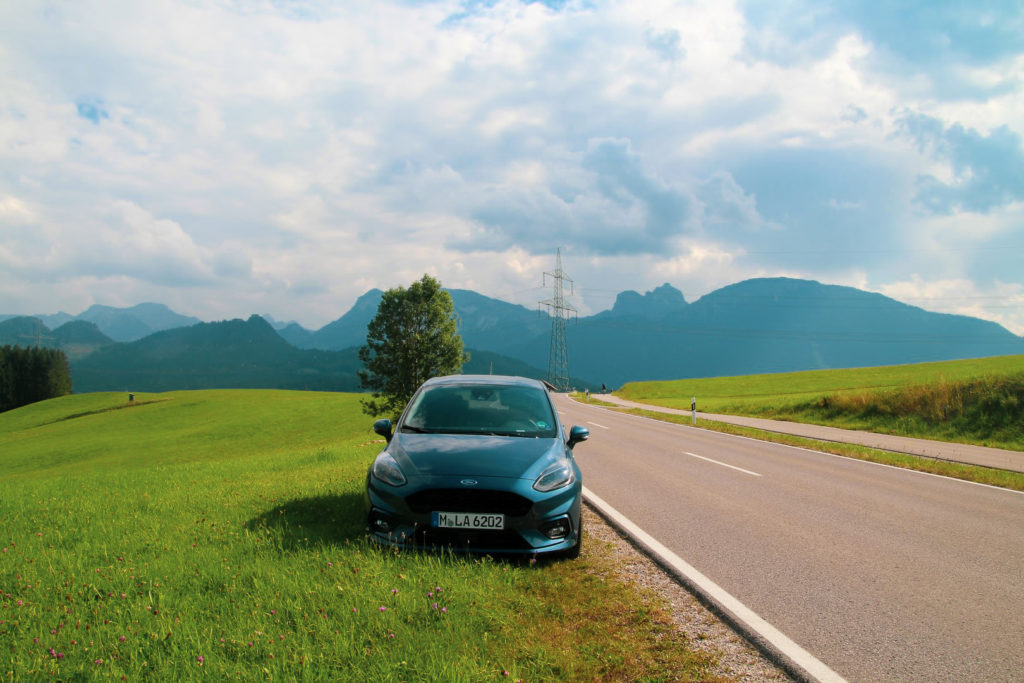

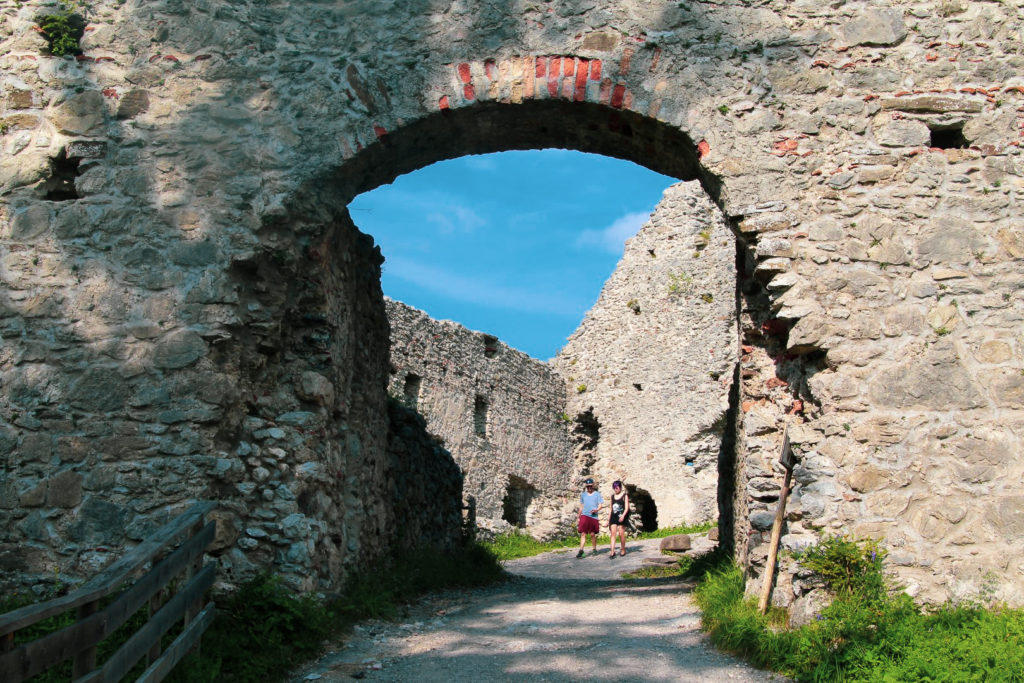
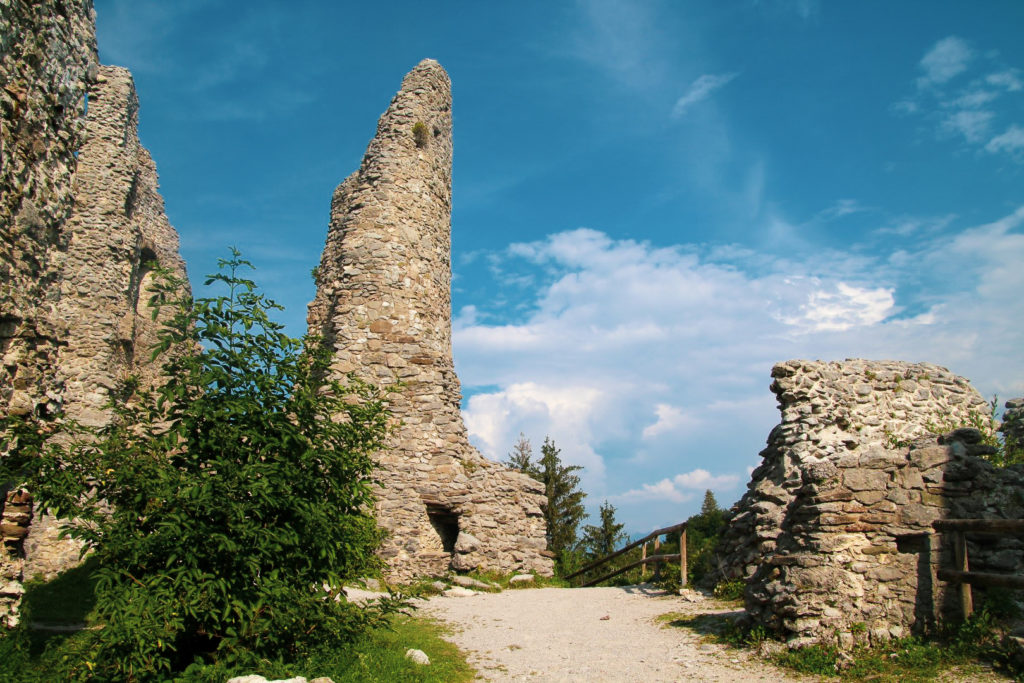
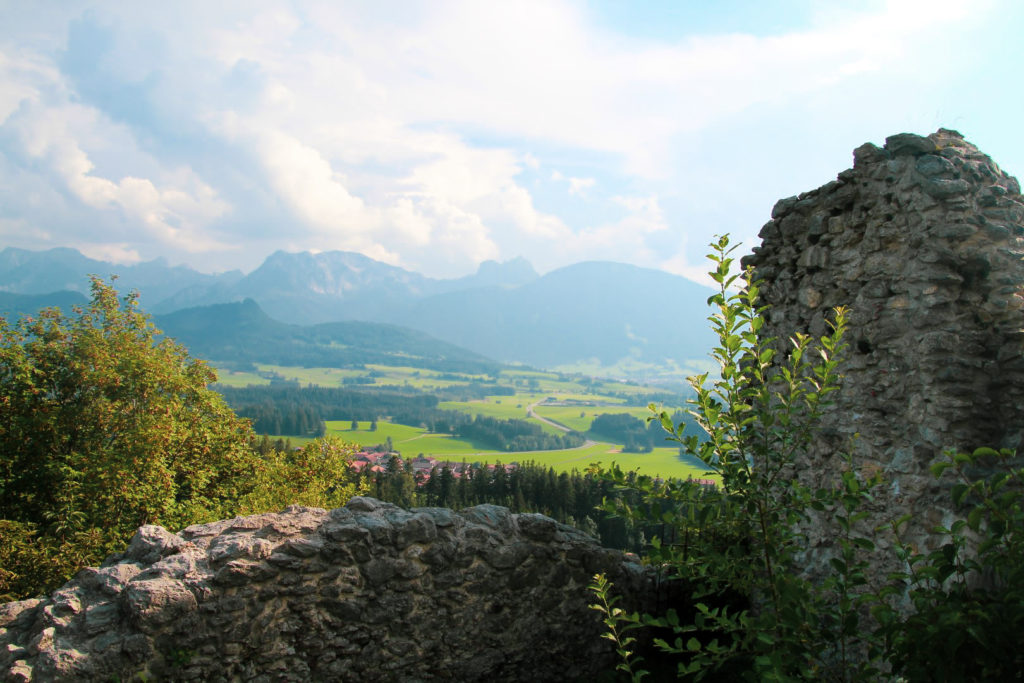

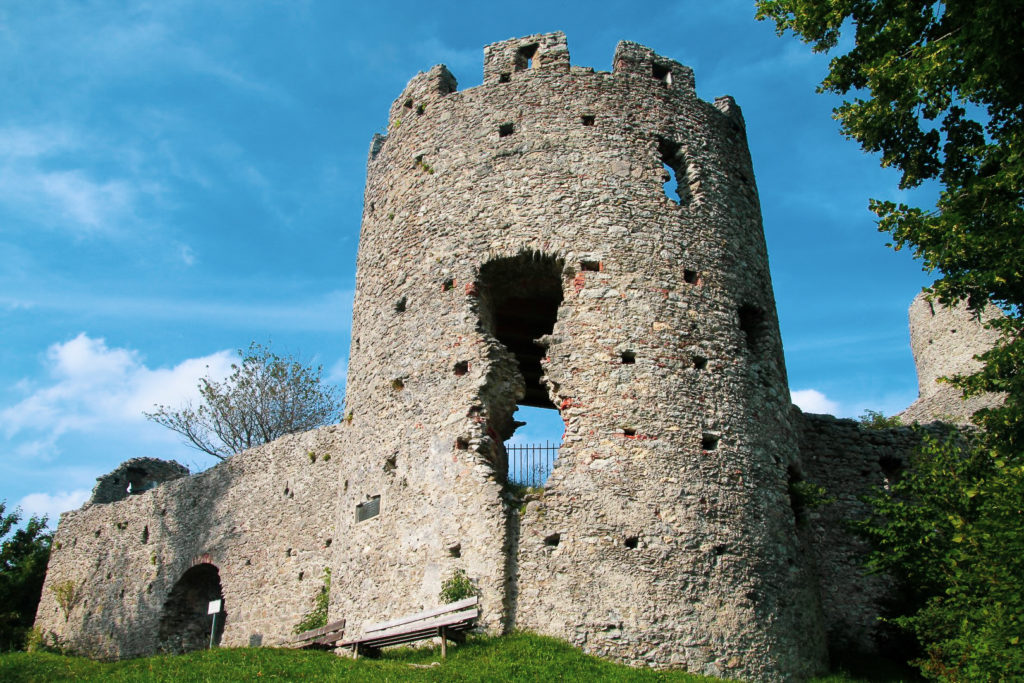
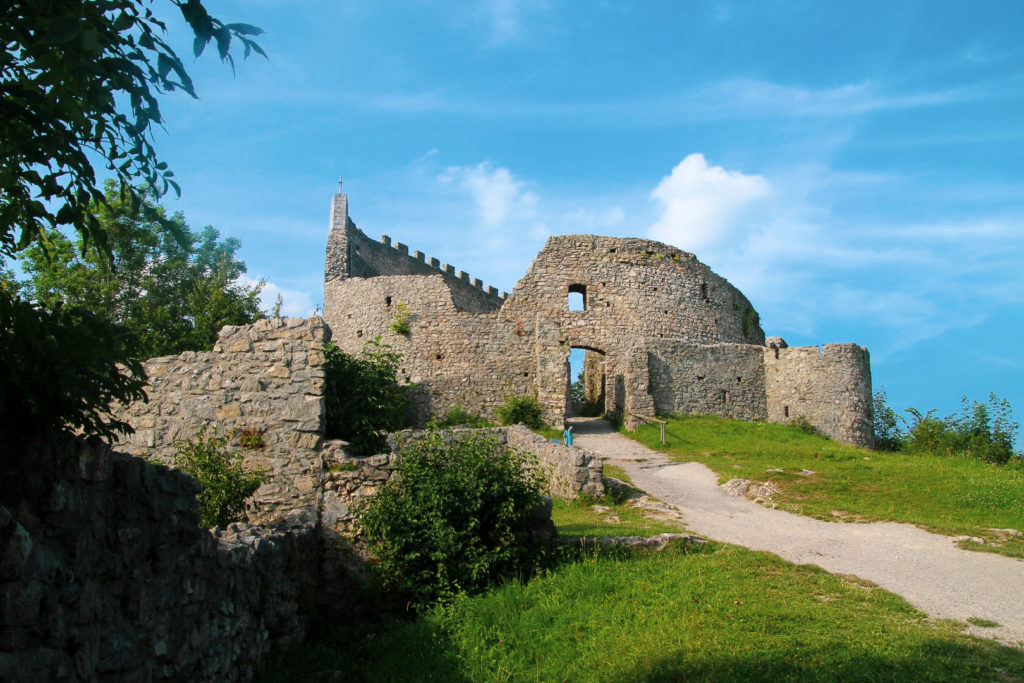
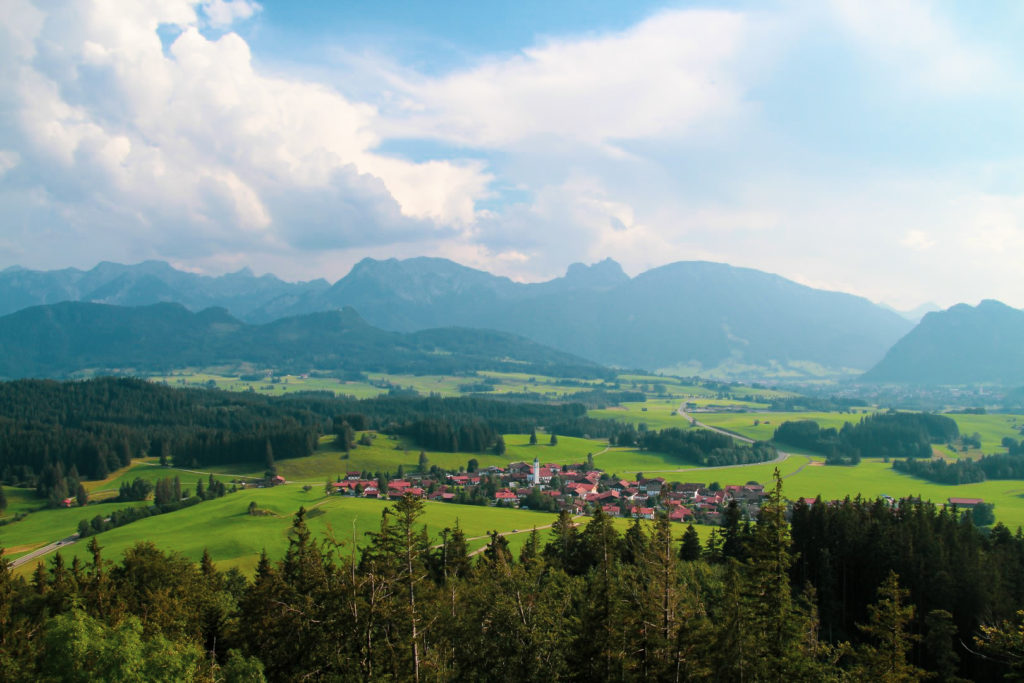
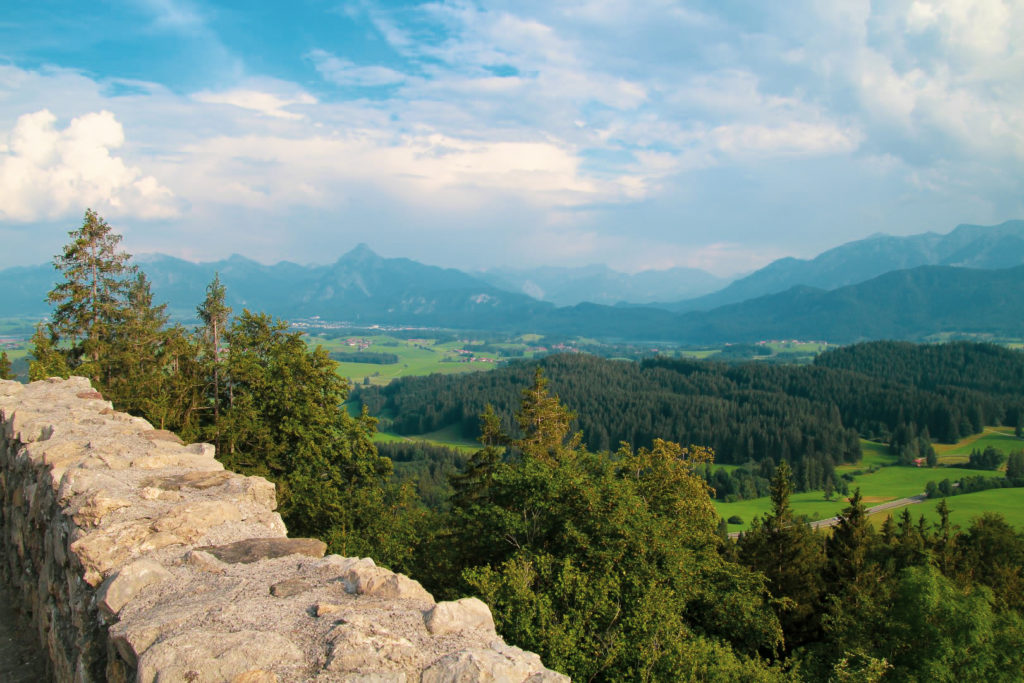
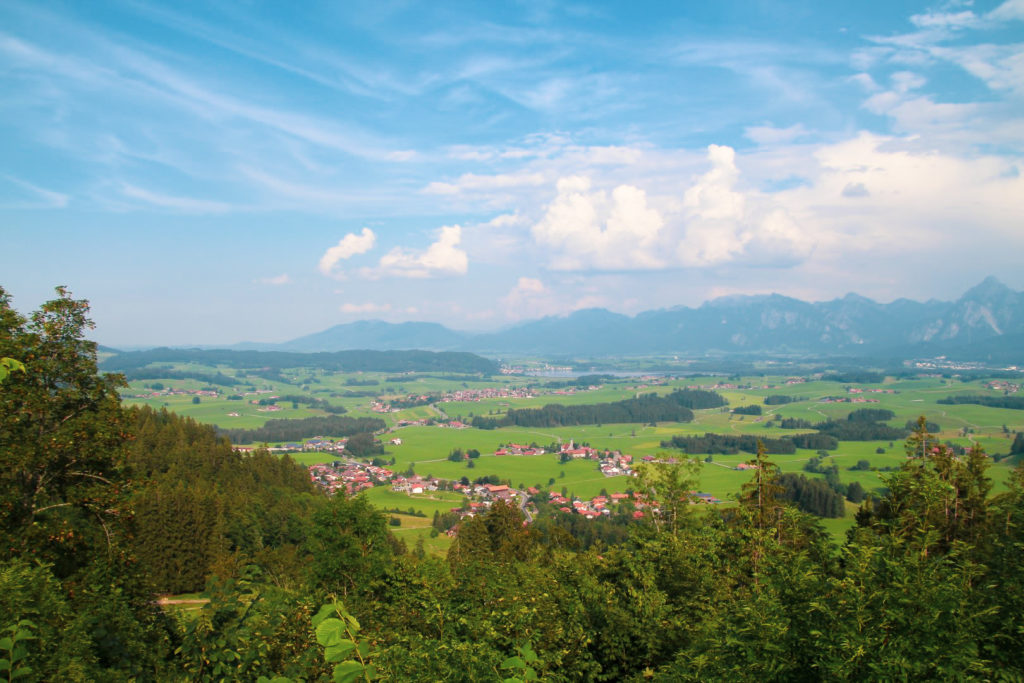
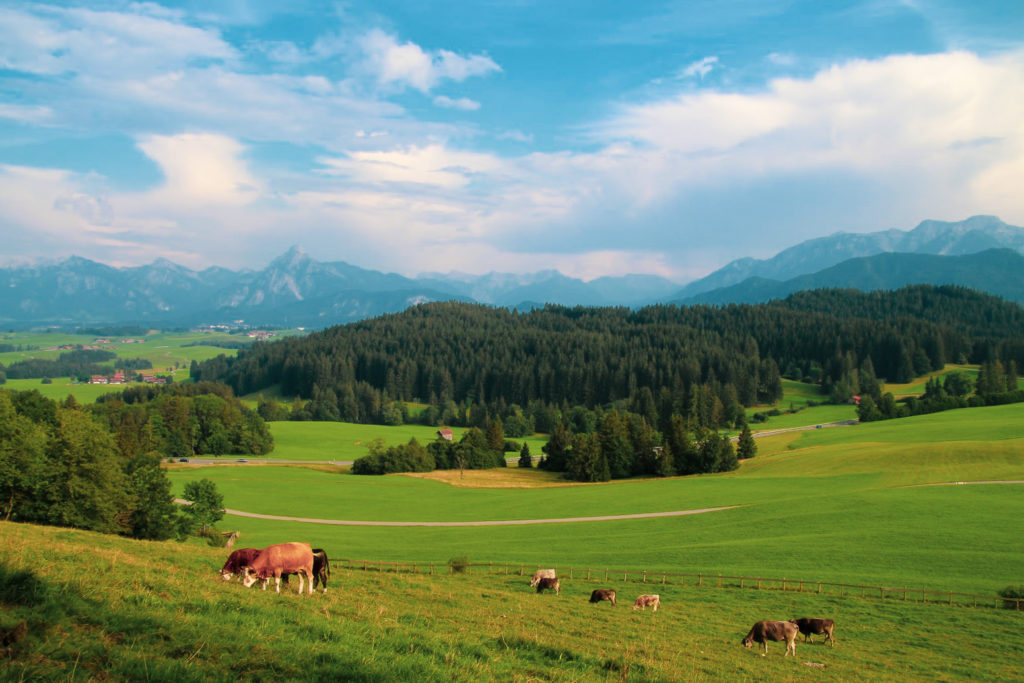
With sunset approaching, I continued my roadtrip with yet another detour into Austria, this time to the pene-exclave of Jungholz where I spent the night in my tent at the campsite before climbing a mountain in the morning. But more about that adventure later!
Leave a Comment
Pingback: To Weimar and beyond: Chasing cultural heritage in central Germany – I Live as I Dream on 13/03/2021
Pingback: High up in the Alps: Standing between four borders on Mt. Sorgschrofen – Northtrotter on 13/03/2021
Pingback: My 20 favourite new destinations of 2020 – Northtrotter on 13/03/2021
Pingback: Ancient monasteries & other adventures: Our spontaneous trip to Georgia’s Kutaisi – Northtrotter on 13/03/2021
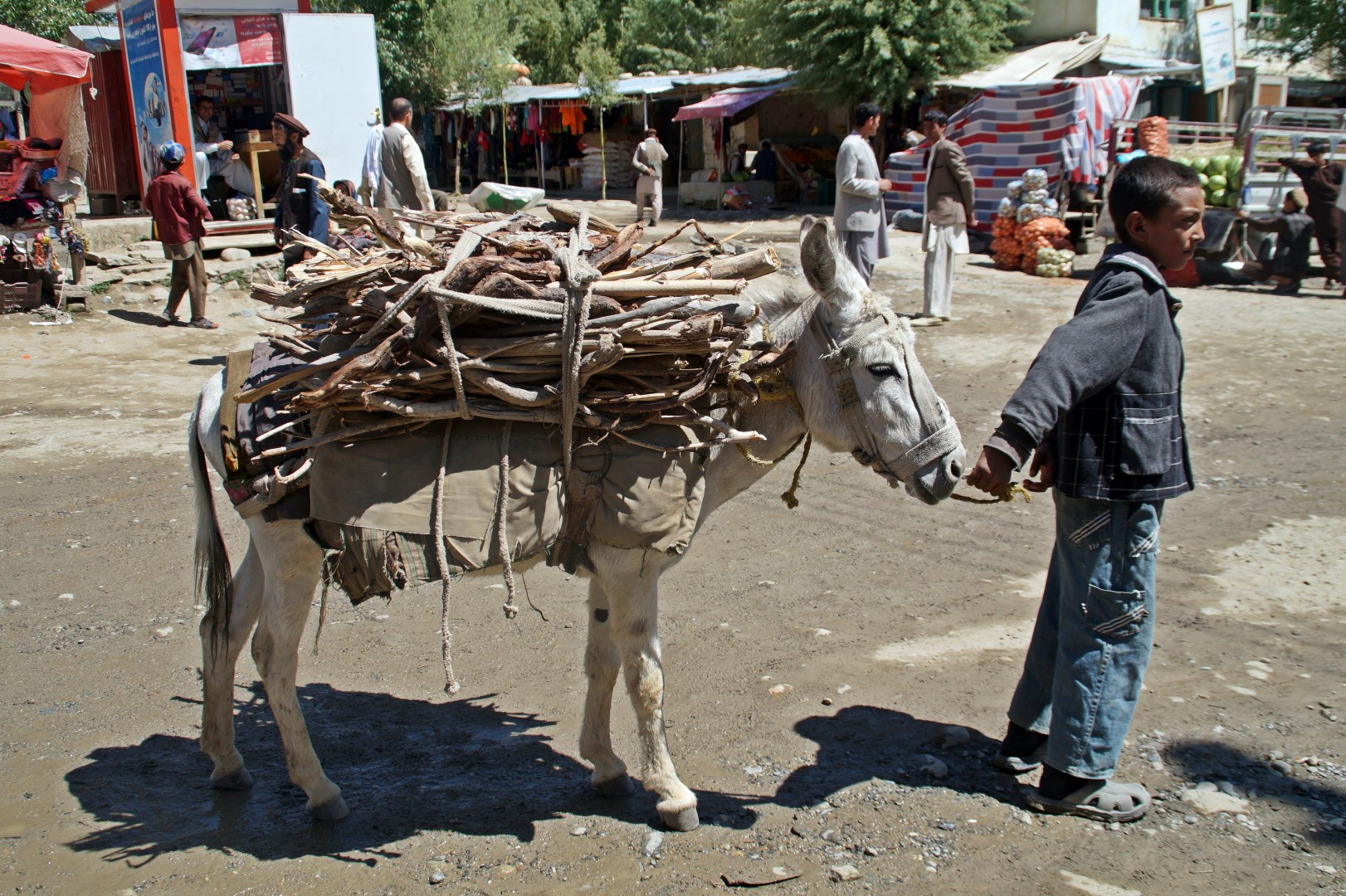
4 COMMENTS